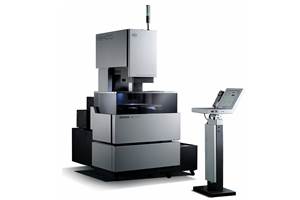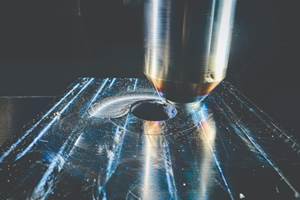Materials Are the Most Important Component in AM
You will see a lot of additive machines at IMTS. Success with those machines is determined by an underappreciated ingredient. Read our collection of recently published articles focused on materials.
When people consider the advance of additive manufacturing (AM), they tend to think of the machines. The processes for additively building industrial parts are still advancing, new processes are still coming, and the machines that apply these processes continue to evolve in terms of capability, capacity, efficiency and features. Additive machines continue to captivate. 3D printers are—forgive me—really cool.
But here is the thing: The machine itself is not the end user’s experience of AM. The end user is the one who receives the part, and this person likely will not see the machine on which it was made. She might not even know it was made additively. But that user will experience the material. For as the long as the part is in use, for as long as it functions whether well or poorly, the user will live with the material choice that was made for that part.
Materials are thus the most important component of additive manufacturing.
Challenge me on that statement if you wish. Surely the additive machines must be the most important component of AM? My response: The machines deliver value only by applying a material. The machines’ ability to solve problems is entirely defined by the range of materials available for them to apply.
And in the particular case of metal additive, materials also represent perhaps the greatest area of opportunity. Additive processes make it possible to achieve alloys and other metallics that can’t be realized any other way. The most recent Rapid + TCT show, for example, saw not only new metal matrix composites achievable only by AM, but also the introduction by metal supplier Arconic of multiple new aluminum alloys, including one that achieves greater strength at high temperatures compared to conventional alloys by leveraging the rapid solidification rate of powder-bed AM. In other words, the design freedom of AM encompasses not only geometric freedom, but the freedom to realize new metal properties.
Recognizing all this, we have made a very deliberate choice in recent weeks, at this moment in the year. We are fast approaching the International Manufacturing Technology Show (IMTS), which has become a leading event for additive manufacturing technology. IMTS will offer attendees the chance to see many additive machines, including some being launched at the event. See our collection of previews of what will be seen at the show. And to support and complement this experience, we chose to pursue articles on materials, so we could publish an issue of the magazine on this theme. The materials are the enablers to all the additive machines you will see at IMTS.
The theme is big. In covering materials, there is much to say. Articles we’ve recently posted explore topics including:
- Polymer development for AM
- Metal powder evaluation on a system that can also inspect the build
- AM for high-performance ceramics
- The arrival of special metals available solely because of additive
- Resilient soft materials allowing machines to mimic muscles and skin
- A material for NASA withstanding temperature extremes, chemicals and electrical charges
We are on the cusp of a materials moment in additive manufacturing. That prediction follows inevitably from the role that AM technology is now finding, the role that will be seen at IMTS. Those machines are now being applied to production. They are becoming more capable for production. So, as the very next step, the users of those machines will look to materials. They will turn to materials engineers to give them exactly the material properties required to meet the needs of those users of the parts produced through AM.
Related Content
HB 400 Molybdenum Wire EDM Machine for Metal Additive Manufacturing
IMTS 2022: The HB 400 Molybdenum Wire EDM machine is a 4-axis service system, medium-speed wire cutting machine designed to help users achieve the best surface finish with maximum efficiency and nonelectrolytic power supply technology.
Read More3 Points About 3D Printing Large Parts We Can Learn From the Lunar Habitat (Video)
Ingersoll Machine Tools describes the capabilities and promise of large-scale additive manufacturing as seen in the 3D printed sections of the Rosenberg Space Habitat.
Read MoreThe Cool Parts Show Is Coming to IMTS 2022
Find cool parts (and cool hosts) in these locations at the International Manufacturing Technology Show this September.
Read MoreHybrid Manufacturing Turns Design Inside Out
Hybrid systems combine traditional subtractive processes with additional processes, including laser metal deposition for additive manufacturing and friction stir welding, enabling manufacturers to design products from the inside-out.
Read MoreRead Next
To Improve Performance of Compression Molded Composites, Add 3D Printed Preforms
9T Labs' Additive Fusion Technology enables the manufacture of composite structures with as much or as little reinforcement as is necessary, using 3D printed continuous fiber preforms to add strength just where needed.
Read MoreLooking to Secure the Supply Chain for Castings? Don't Overlook 3D Printed Sand Cores and Molds
Concerns about casting lead times and costs have many OEMs looking to 3D print parts directly in metal. But don’t overlook the advantages of 3D printed sand cores and molds applied for conventional metal casting, says Humtown leader.
Read MoreGE Additive Rebrands as Colibrium Additive
As part of the brand name transition, both the Concept Laser and Arcam EBM legacy brands will be retired.
Read More





.png;maxWidth=300;quality=90)














